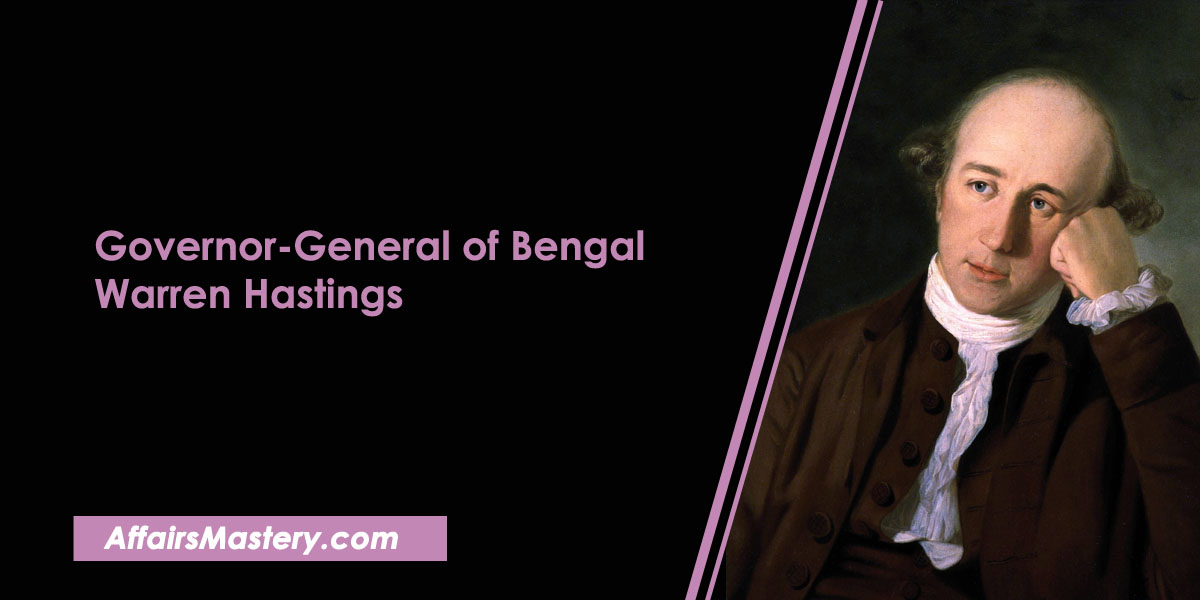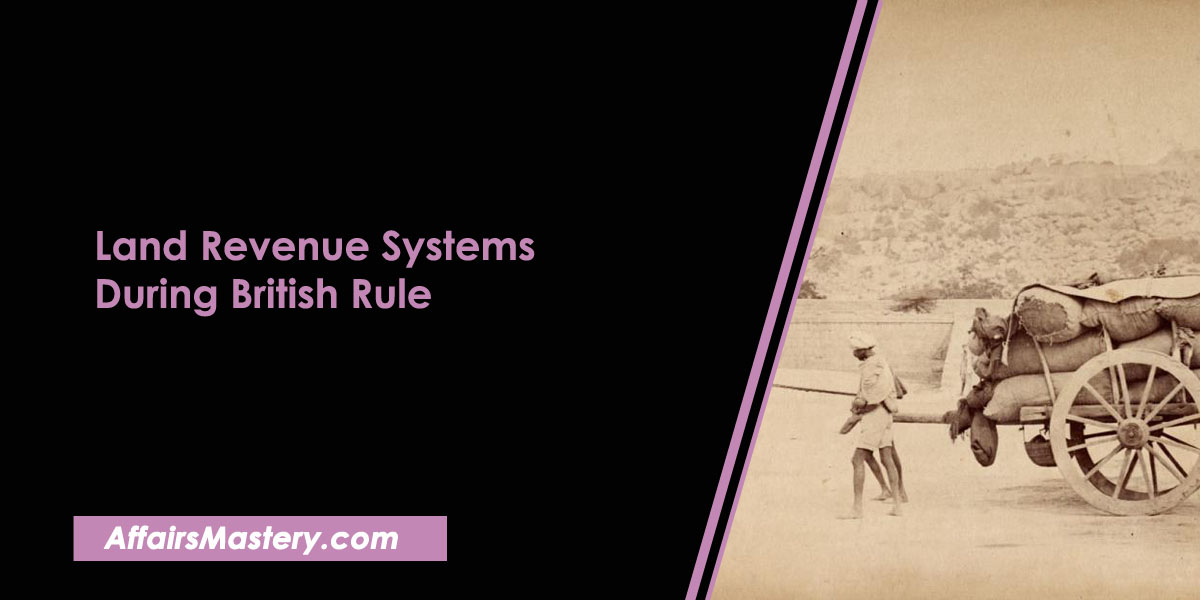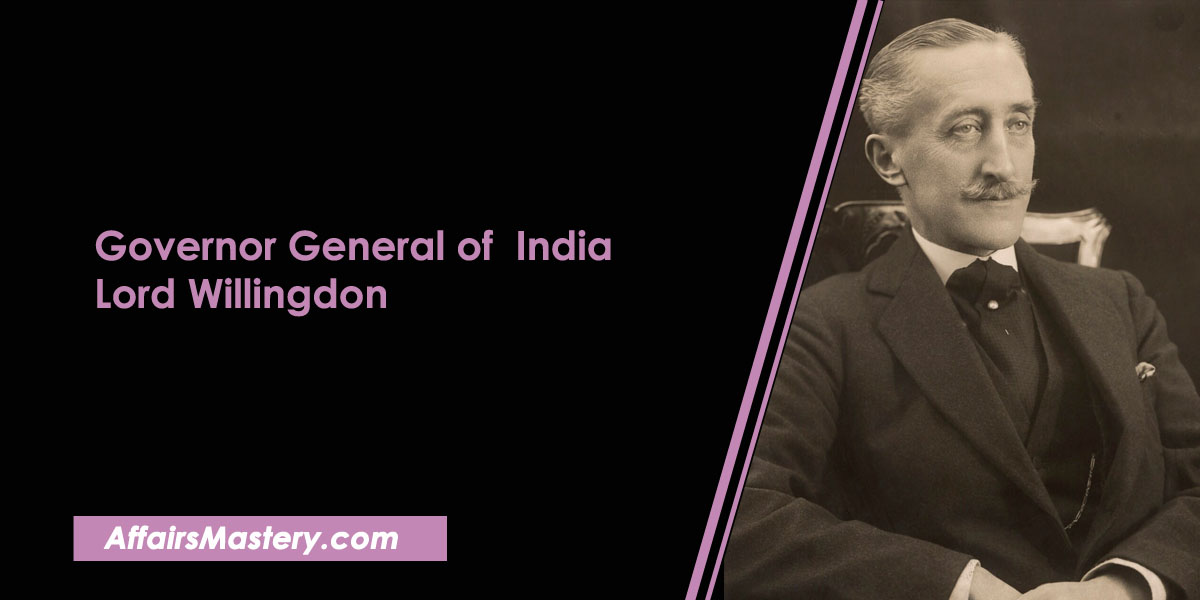Warren Hastings – Important Short Notes for Exams
A timeline of Warren Hastings‘ stay in India and events that happened during his time. Lord Warren Hastings was the first Governor General of Bengal. He had a great participation in Indian modern history. Topic is useful for UPSC, State exams and other exams and for general knowledge.
About
- Warren Hastings(1732-1818), FRS(Fellowship of the Royal Society), was born in Churchill, Oxfordshire. During his studies, he emerged as a top scholar and joined British East India Company in 1750 as a Clerk.
- He arrived in India at Calcutta(Aug 1750) where he mastered Urdu and Persian.
- Due to his good work, he was promoted in 1752 and sent out to Kasimbazar(a major trading post in Bengal).
- Hastings worked under Robert Clive’s forces as a Volunteer when Clive retook Calcutta in 1757.
- When the war came to an end, Robert Clive met Warren Hastings and got impressed by him.
Events during his time in India
- In 1758, Warren Hastings took a major step forward in his career when he was appointed as the British Resident of Murshidabad – the Bengali capital – at Clive’s suggestion. This opened up many opportunities for him and allowed him to further develop his position.
- As the British East India Company began to take control of Bengal, their power and influence also increased significantly. This allowed Warren Hastings to have a greater impact on the region’s politics and economy.
- During his time at Madras, Hastings initiated reforms of trading practices which eliminated the need for middlemen and resulted in a win-win situation where both the East India Company and Indian labourers benefited from these changes
- Hastings agreed with Clive that the three major British Presidencies (settlements) – Madras, Bombay and Calcutta – should be unified under one rule instead of being governed independently as they currently were. This would create a more efficient system for governing these areas.
- In 1772, he became Governor of Bengal.
- In 1773, he became first Governor General of the Bengal through the Regulating Act, 1773 that brought Madras and Bombay Presidencies under Bengal Control.
- He abolished Dual system of administration(1772).
- In 1772, the British East India Company moved the treasury from Murshidabad to Calcutta and made it Bengal’s capital. This was a significant move that changed how business was conducted in this region of India.
- Involved in Treaty of Purandhar(1776) with Peshwa.
- He redefined Hindu and Muslim laws.
- An ‘Anglo-Brahminical’ legal code which was created under Warren Hastings, “Code of Gentoo laws“.
- First Anglo-Maratha war(1776-82) and Treaty of Salbai(1782).
- Founded Asiatic Society of Bengal with William Jones(1784).
- Second Anglo-Mysore War(1780-84) and Treaty of Mangalore(1785) with Tipu Sultan.
- Appointed a collector for each district to manage the revenue and an Accountant General was also assigned in order to keep track of all financial transactions.
- The Zamindars’ judicial powers were officially abolished, meaning they no longer had the authority to make decisions on legal matters or enforce laws.
- Started Diwani and Faujdari adalat at district level and Sadr diwani(Central Civil Court) and Nizami adalats(Central Criminal Court).
- The criminal court was to have an Indian judge, which would provide a unique perspective and understanding of the law that could be beneficial in making decisions.
- He implemented a consistent tariff rate of 2.5% for both Indian and foreign goods, which was beneficial to all parties involved in the trade process.
- Hastings took the initiative to abolish the system of dastaks which were being misused by company officials and traders in order to create a more fair trading environment.
- Wrote Introduction to first English translation of Gita by Charles Wikins.
- Impeachment of Hastings attempted between 1787 and 1795 in the Parliament of Great Britain, accused of misconduct during his time in Calcutta.
If you find our content helpful and interesting, please consider joining us on Telegram @affairsmastery to show your support. We would really appreciate it!
Related articles
- Important Battles in Indian History
- Important treaties in Indian history
- List of Foreign Travellers who came to India
- List of Governor General of India and Viceroy of India
- Robert Clive – Important Short Notes for Exams
- Lord William Bentinck – Important Short Notes for Exams
- Lord Canning – Important Short Notes for Exams
- Lord Mountbatten – Important Short Notes for Exams
- C. Rajagopalachari – Important Short Notes for Exams
- Lord Wavell – Important Short Notes for Exams
- Lord Linlithgow – Important Short Notes for Exams
- Lord Willingdon – Important Short Notes for Exams
- Non Cooperation Movement (1919-1922)
- Important Personalities related to Social Movements of India
- List of Important Personalities of Indian Freedom Struggle
- List of Important Books on Revolt of 1857 and their Author
- Important Leaders of 1857 Revolt and their places
- Constituent Assembly of India and its Composition: Important Short Notes
- Important Tribal Movements in India
- Direct Action Day 1946: Important Short Notes for Exams
- Interim Government of India, 1946 and its members
- Important Socio Religious Reform Movements in India – Short Notes
- Khilafat Movement (1919-1924) – Important Short Notes for exams
- Lucknow Pact, 1916 – About, Features, Outcome (Important Short Notes)
- C R Formula or Rajaji Formula, 1944 – About, Main Points (Important Short Notes)
- Wavell Plan, 1945 – About, Main Points (Important Short Notes)










